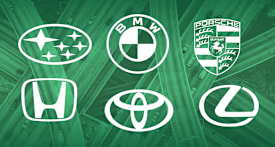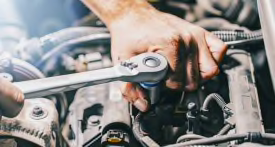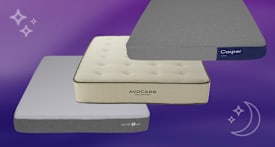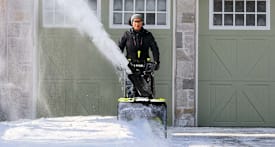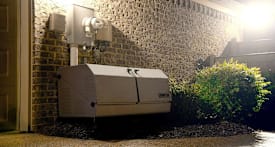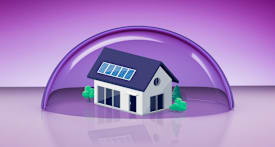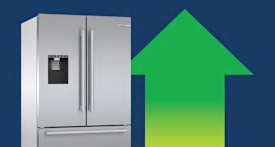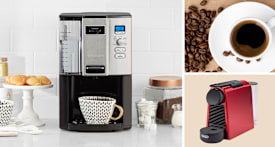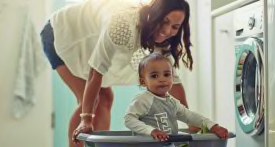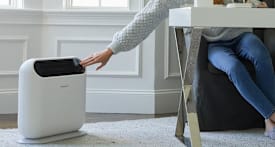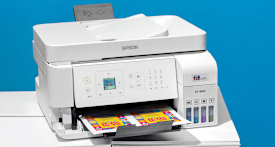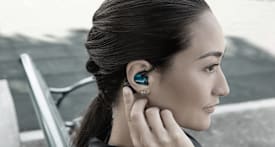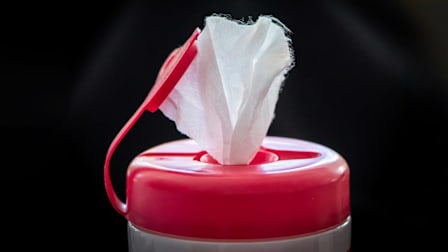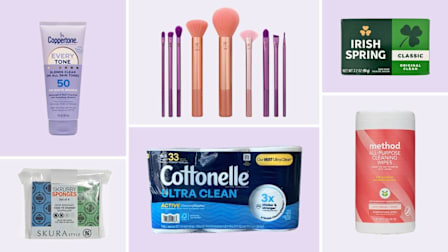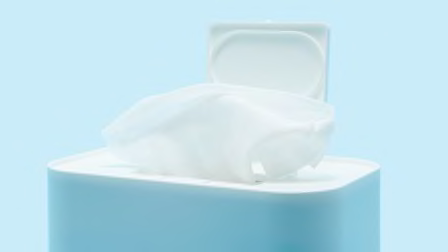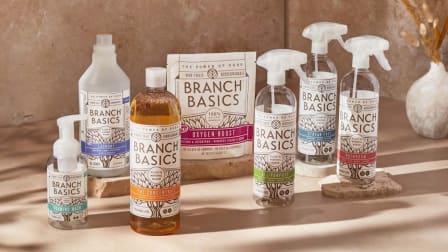How to Choose Baby Wipes Without Harmful Chemicals
We looked at wipes from Pampers, Huggies, Amazon, Seventh Generation, and more to see which are safer for you and better for the planet
Baby wipes are used on the most sensitive parts of our most precious family members—newborns—so it’s important that they be free of potentially harmful, harsh chemicals.
And, increasingly, baby wipes are being used for purposes far beyond a diaper change, from sticky fingers and makeup removal to messy countertops and kinder, gentler TP. That not only ups the importance of making sure that wipes don’t contain dangerous ingredients but also raises other questions, too, like what happens to all these wipes when they’re thrown away?
To answer those questions, Consumer Reports recently tested 10 popular baby wipe brands for several concerns: lead and several other heavy metals; bacteria and other microbes; parabens, which are preservatives linked to hormone disruption; and two potential carcinogens, formaldehyde and 1,4-dioxane. Fortunately, we didn’t detect any of those chemicals in the wipes. CR also tested the pH of the wipes, which can indicate how gentle they may feel, and several did have low levels, which could make them more irritating to a baby’s extra-sensitive skin.
In addition, it’s possible that the wipes could contain some harmful chemicals that we didn’t test for. So CR partnered with Made Safe, an independent organization that screens household products for potentially harmful ingredients and certifies those that are safer for human and ecosystem health. Made Safe scrutinized the ingredients lists of the 10 wipes in our tests, plus another five popular brands, identifying products with the fewest chemicals of concern.
Finally, recognizing that a product can’t be good for children if it jeopardizes their future, our top choices are limited to those that are also plastic-free and thus more likely to break down in the environment, making them good choices for your baby, your family, and the planet.
When you shop through retailer links on our site, we may earn affiliate commissions. 100% of the fees we collect are used to support our nonprofit mission. Learn more.
What’s in a Baby Wipe?
Many diaper wipes are labeled with a long list of complicated ingredient names. While wipes don’t need to have much more than water to work well for the task at hand, some chemicals that can end up in them are more concerning than others. Identifying those potentially worrisome chemicals, however, can be difficult. Here are some of the ones to be particularly aware of, and how to spot them.
Ethylene oxide and 1,4-dioxane: While both of these are potential carcinogens that can be in diaper wipes, neither has to be listed on product lists. That’s because they aren’t considered ingredients per se but rather contaminants introduced during the manufacturing process. Ethylene oxide is used to make other ingredients less harsh. And 1,4-dioxane is a byproduct of that process.
That second chemical is one that CR tested for and didn’t detect, which is reassuring. Our tests checked primarily to see whether products were above 0.5 parts per million. That level aligns with the 1 ppm maximum concentration allowed in baby wipes and other personal care products sold in New York State as of December 2023. Yet even that amount may be too high, growing research suggests, due to 1,4-dioxane’s association with several cancers at even very small concentrations. Indeed, Canada and the European Union have taken more aggressive steps than the U.S. in limiting the use of either chemical in personal care and cosmetic products.
Another concern: Some 1,4-dioxane could be released into the environment when the wipes are manufactured or thrown away, contaminating soil, sediment, air, and water. To make matters worse, the chemical isn’t readily biodegradable, according to the Environmental Protection Agency. So once it’s in the environment, it’s there for a very long time, potentially spreading health risks wherever it ends up.
Quats: Other chemicals used in baby wipes and many other personal care products that raise safety questions are called quats, short for quaternary ammonium compounds. It’s thought that many chemicals in this group can trigger asthma or skin allergies in some people. And one particular quat—benzalkonium chloride—has been identified as worthy of more safety research by the California Department of Toxic Substance Control and several nonprofit advocacy groups, including the Campaign for Safe Cosmetics and Women’s Voices for the Earth.
Polypropylene and PET: These aren’t ingredients that are added to wipes but instead can be in the material that the wipes themselves are made of. And yes, that means that many wipes are basically plastic in disguise. PET (polyethylene terephthalate) is often used in plastic bottles and polyester, and polypropylene is in the packaging of many products and sometimes in diapers and period-care products.
The composition of wipes is particularly important when thinking about their environmental impact. Neither type of plastic is biodegradable; instead, they turn into small pieces called microplastics, which can work their way into our drinking water, our food, and our bodies. In addition, while some forms of plastic made with PET or polypropylene are recyclable, baby wipes aren’t, making them particularly likely to end up in landfills or thrown away as litter and, ultimately, find their way into the ocean, where they can spread microplastics far and wide. (Read more about the health risks posed by plastic products.)
Baby Wipe Companies Respond
Consumer Reports asked all of the baby wipe companies with ingredients that raise red flags for our safety experts to comment on our analysis.
Costco told CR that it uses very small amounts of phenoxyethanol as a preservative in its Kirkland Signature Baby Wipes “to maintain product integrity, quality, and safety.” Pampers said that all of the ingredients and materials used in its wipes, as well as in the finished products, undergo rigorous safety and performance testing.
Amy Ziff, the founder of Made Safe who led the review of baby wipe ingredients for CR, acknowledges that the amount of the chemicals in the Costco and Pampers products is low. But “the goal is that these chemicals should not be used in manufacturing products at all,” she says. “With cancer impacting one in every two to three people in their lifetime, even small amounts of a potential carcinogen seems an unwelcome risk to have in our environment, especially when it’s not absolutely essential.” She says that several companies have successfully made wipes without any of those chemicals.
Other companies didn’t respond to CR’s request for comment or didn’t provide answers to our questions.
